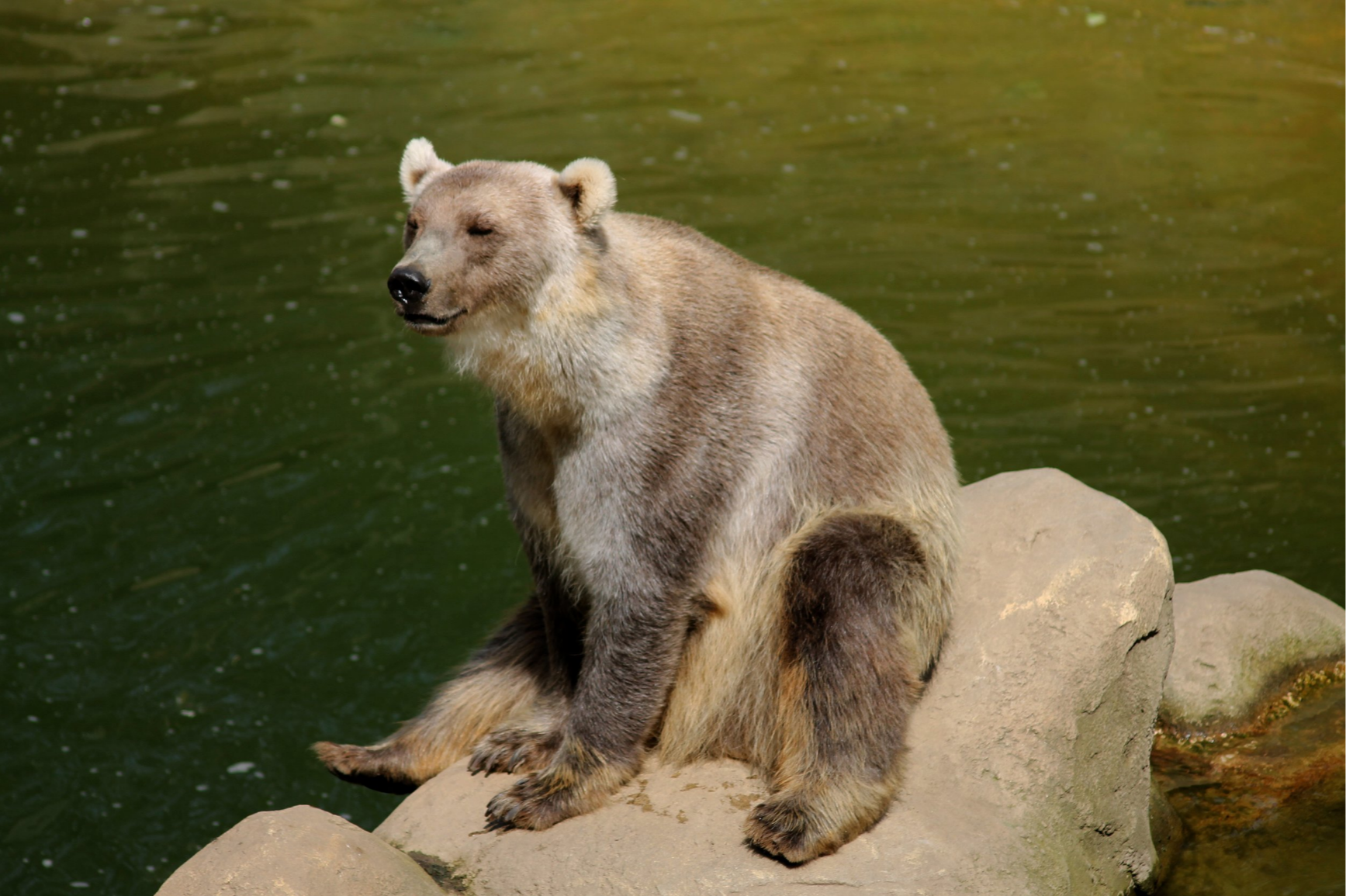10 Facts about Grizzly Bears
Lead Scientist Cate Collins dives into 10 fascinating facts about Grizzly Bears.
Visiting the Khutzeymateen Grizzly Sanctuary on the coast of British Columbia near Prince Rupert is a bucket-list adventure for many Canadians. Before heading out on one of our one-day expeditions to see Grizzlies in the wild, here are ten fun facts for you to learn more about these magnificent bears!
Grizzlies don’t truly hibernate.
While grizzly bears spend the winter in dens, they do not enter a true hibernation. Unlike deep hibernators such as groundhogs and bats, Grizzlies experience a state called torpor, or light hibernation, where they can be woken easily. They slow their heart rate and their metabolism, relying on fat stores to survive the winter months.
Amazingly, they do not go to the bathroom while in their den!
Their hump makes them strong diggers.
The hump on a grizzly bear’s shoulders is where its muscles attach to its backbone, powering its forelimbs. This gives them incredible strength for digging. They also have long claws on their front paws, which allow them to dig dens and to root for food.
Grizzly bears cannot climb trees.
Grizzlies have long claws designed for digging, but their claws are not suited for climbing. Cubs can climb trees to evade danger because their claws are still relatively short, but they lose this ability as they grow older. Black bears, on the other hand, have much shorter claws, making them excellent climbers!
If it’s edible, they will eat it.
Grizzly bears are omnivores, meaning they eat both plants and animals.
They typically eat roots, berries, grasses, small rodents, fish, hoofed animals like moose, and small mammals like marmots. Their diet depends on their habitat. The grizzly bears we visit in the Khutzeymateen Grizzly Bear Sanctuary are fortunate to have an abundant food source because of the salmon spawning grounds.
Did you know? “Khutzeymateen” is a Tsimshian word meaning “…a confined space of salmon and bears,” making it one of the best places in the world to see grizzly bears in their natural habitat.
Grizzlies can have cubs with polar bears.
Meet the Grolar Bear or Pizzly! While rare, grizzly bears and polar bears can interbreed in the wild. These hybrid cubs have a combination of characteristics traits from both parent species.
You can see the mix of white and brown fur on this grolar bear.
Females can delay their pregnancy.
Although grizzlies mate in the spring, their pregnancy does not begin until fall. This process, called delayed implantation, allows the embryo’s development to pause for several months. This allows the mother time to hunt, forage, and accumulate enough fat to survive the winter torpor. Once she enters the den, the embryo implants and begins developing.
Cubs are around 1 lb at birth.
For such massive animals, grizzly cubs are surprisingly small at birth. Weighing only about one pound, these tiny newborns are born in the den and quickly gain weight by nursing on their mother’s fat-rich milk.
They are devoted moms.
Grizzly mothers are fiercely protective of their cubs. Cubs remain with their mothers for two to three years, learning essential survival skills. During this time, the mother ensures their safety and teaches them how to forage and hunt.
Their scientific name essentially means “Horrible Bear Bear.”
Grizzly bears’ scientific name is Ursus arctos horribilis. “Ursus” is Latin for bear and “arktos” is Greek for bear. The word “horribilis” translates to horrible in Latin, making their name mean “Horrible Bear Bear.”
Grizzlies keep their ecosystem healthy.
Grizzly bears play a vital role in maintaining the balance of their ecosystems. Through hunting, foraging, and digestion, they help regulate prey populations, aerate the soil, and spread plant seeds. As keystone species, they significantly impact their environment.
In coastal British Columbia, grizzlies help distribute nutrients like nitrogen from salmon carcasses. When bears bring fish onto land, the nutrients enrich the soil, promoting healthier plant growth.
To witness these incredible bears in their natural habitat, join us on a 1-day Grizzly Bear Expedition to the spectacular Khutzeymateen Grizzly Bear Sanctuary on the coast of British Columbia. There’s no better place to see Grizzlies in the wild!
References
National Wildlife Federation. Grizzly bear. https://www.nwf.org/Educational-Resources/Wildlife-Guide/Mammals/Grizzly-Bear (Accessed February 18, 2025)
BC Spaces for Nature. Khutzeymateen Grizzly Bear Sanctuary. https://spacesfornature.org/greatspaces/khutzey.html (Accessed February 18, 2025)
University of British Columbia. Grizzly bear conservation in BC. Open Case Studies. https://cases.open.ubc.ca/grizzly-bear-conservation-in-bc/ (Accessed February 18, 2025)
About Gold Star Canadian Tours
At Gold Star Canadian Tours, we focus on providing the worlds best travel experiences to authentically Canadian destinations. Our flagship tour is a convenient 1-day Polar Bear Expedition with dedicated non-stop charter flights from major airports directly to Churchill, Manitoba. With Gold Star Canadian Tours, the wonders of the Arctic are closer than ever. Your Adventure Awaits!




